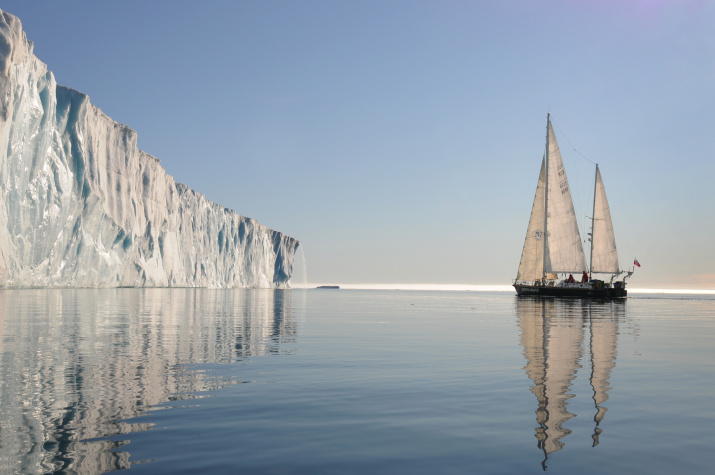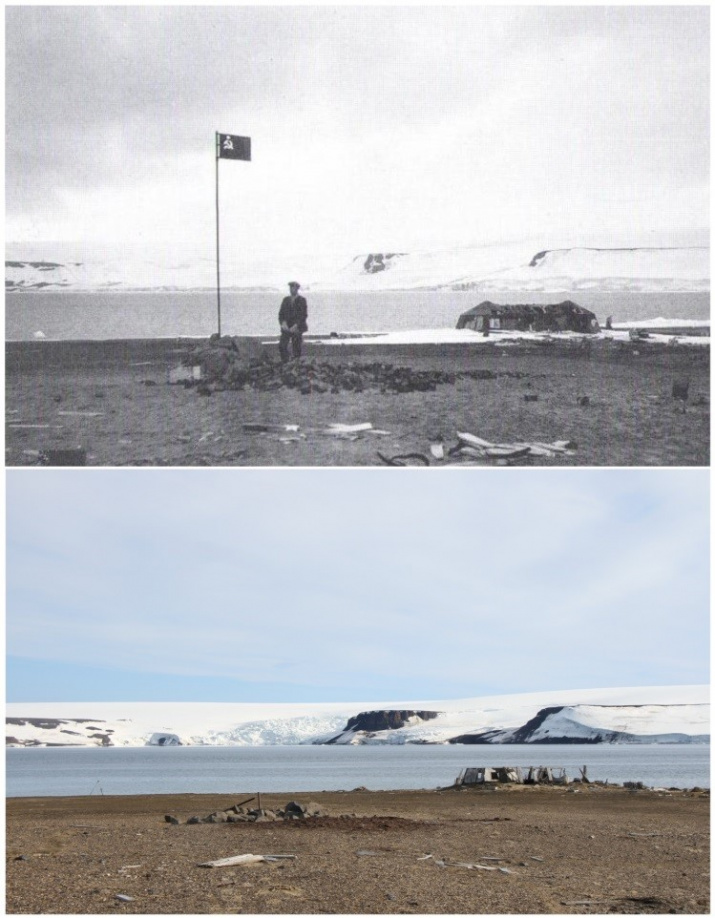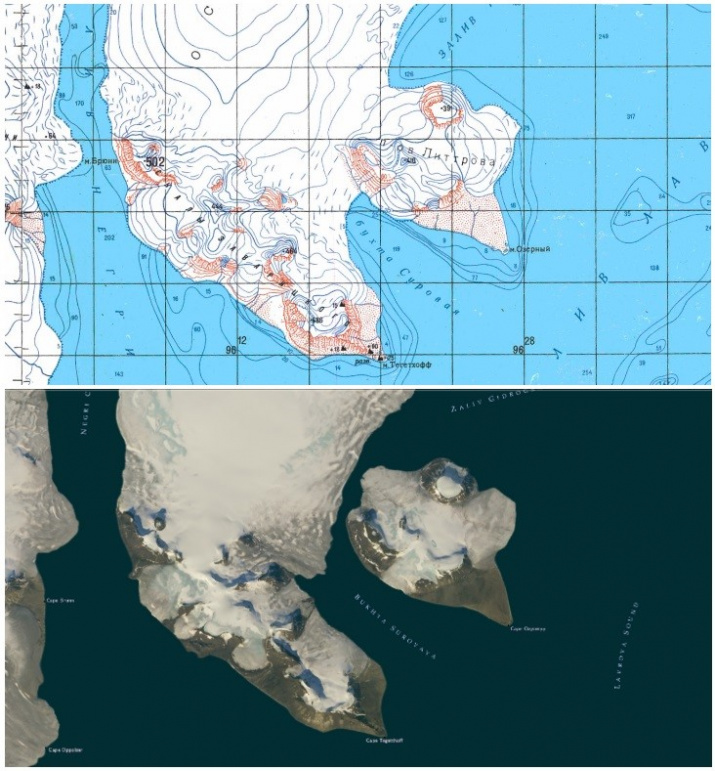Franz Joseph land has become smaller. This conclusion was reached by the scientists of the Russian Arctic National Park. Scientists have conducted a comparative analysis of archival photographs of the archipelago in the 20th century and their modern counterparts, taken from one angle.
Franz Joseph Land was discovered in 1873. Since then, researchers from all over the world have made a number of expeditions to the shores of the archipelago, and, in 1929, permanent people settlements appeared here. Scientists arriving in the Arctic sought to capture the landscapes of the northern archipelago; glaciers of Franz Josef Land were also photographed.
One of such shot belongs to Anthony Fiala, a photographer of the American expedition led by Evelyn Baldwin. A group of researchers landed on the shore of the Alger Island in the central part of the Franz Josef Land archipelago on August 20th, 1901. This moment was captured by the expedition photographer. The archive shot shows how a boat with travelers reached the shore. In the background, in the strait, there were two expedition ships: America and Fridtjof. Behind them you can see the snowy table mountains of Brady Island.
Employees of the Russian Arctic compared Fiala`s photo with a photograph taken from a similar angle by the participants of the archaeological expedition of the national park, which worked on Franz Josef Land in August 2018.
“The difference between the images is 117 years. When comparing them, we noticed that the glaciers on Brady Island changed their configuration. Despite the fact that the island was covered with snow in late August 1901, the landscape is easily distinguished. The modern photo shows that the flow intensity of the outlet glaciers have noticeably decreased over the past century. The historical photograph also depicts the eastern shore of Brady Island, which is partially overlapped by the western shore of Matilda Island. The ice dome smoothly descends into the waters of the strait, and in Fiala`s photo you can’t even see its border. In 2018, a strait is already visible between the shores of the islands, and the ice dome ends on a rocky shore," said historian, Yevgeny Ermolov.
In another photograph studied by experts there is a camp of a Soviet expedition on the icebreaker "Georgy Sedov", which disembarked at Baldwin's camp in 1930. A few days later, Norwegian sailors came to this place on the Bratvaag vessel, who took a photograph against the background of the Soviet flag and the American camp.
“In the background of the historical photograph, you can see the north coast of McClintock Island. The steep wall of the glacier is clearly visible behind the flagpole. In a modern photo taken in 2018 from the same angle, Lednikovaya Bay is clearly visible. The glacier wall is now located in the depths of the bay and is not visible from this angle. The vast field of cracks that form when the outlet glacier slides into the sea can be easily seen in the bay. In the center of the modern photograph, the bare Cape Dostupny is also clearly visible, which was mostly hidden by the outlet glacier in 1930. Now this glacier ends in a steep wall, and the glacier itself is covered with numerous cracks," said Yevgeny Ermolov.
In addition, scientists compared the topographic map of Franz Josef Land with modern photographs of the archipelago from space. The map was compiled on the basis of topographic materials collected by Soviet hydrographers in 1956–1958. It recorded the state of the glaciers at that time. Scientists compared this data with satellite images and came to the conclusion that since the last photos were taken, the surface area of the glaciers has decreased.
“Obviously, by the middle of the 20th century, when the topographic survey was carried out, the area of glaciers was reduced. In the photograph of 1930, Lednikovaya Bay on McKlintok Island is completely occupied by the glacier. On the maps of the middle of the 20th century, the glacier receded significantly, forming a deep bay. But in a space photograph of 2018 the glacier’s area has decreased even more. Compared to the topographic map, it retreated about one kilometer inland,” says Ivan Mizin, deputy director for research of the Russian Arctic National Park.
A comparison of the topographic map and the satellite image also confirms the decrease in the area of the outlet glacier on the Brady Island, which was photographed by Anthony Fiala in 1901. It can be seen that the glacier retreated several hundred meters. “All these examples show us the process of large-scale warming on the archipelago. 56 islands of Franz Josef Land are covered with glaciers. And almost on each of them there is a decrease in the area of glaciation. This is most clearly seen at the places where the glaciers go into the sea. Also, the coastline of the islands has noticeably changed where the ice sheet has disappeared, "said Ivan Mizin.
We would like to remind you that in 2019 the Comprehensive Expedition of the Northern Fleet discovered a number of new islands on Franz Josef Land and Novaya Zemlya, which were formed as a result of the retreat of the glaciers. We also wrote earlier, that a photo chronicle of the northernmost meteorological post of Russia was found in the Russian Arctic national park.




